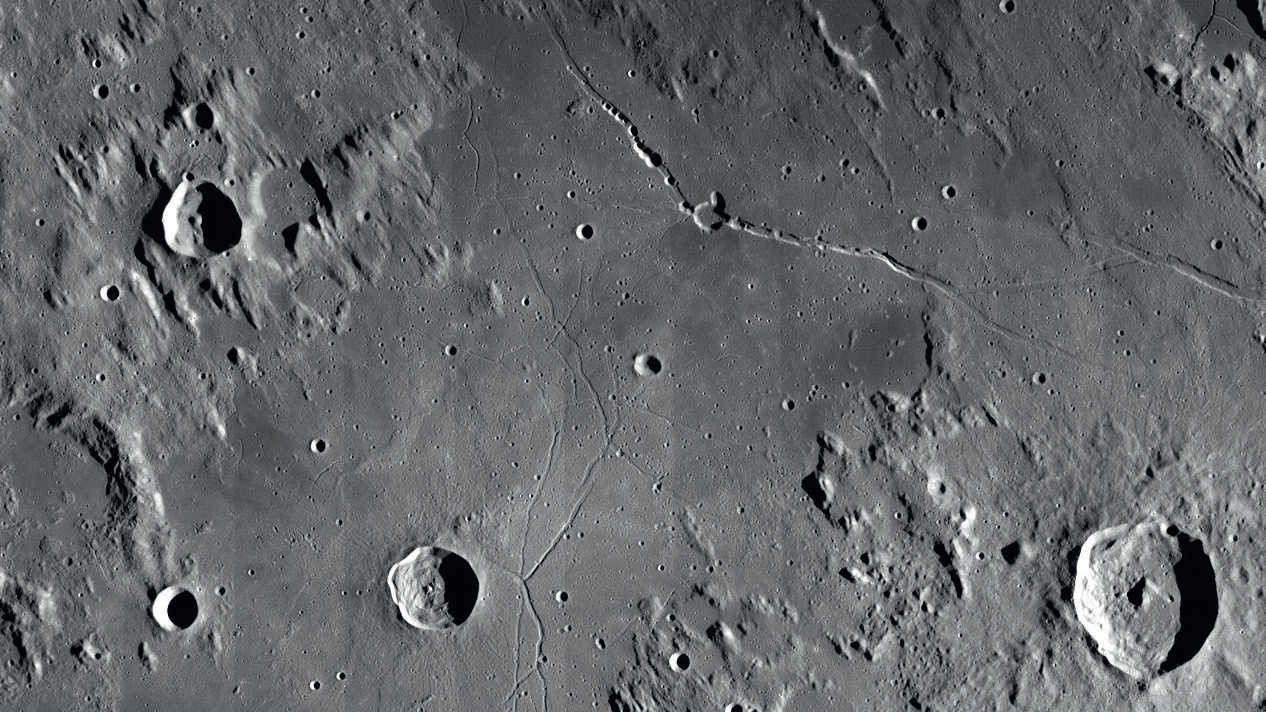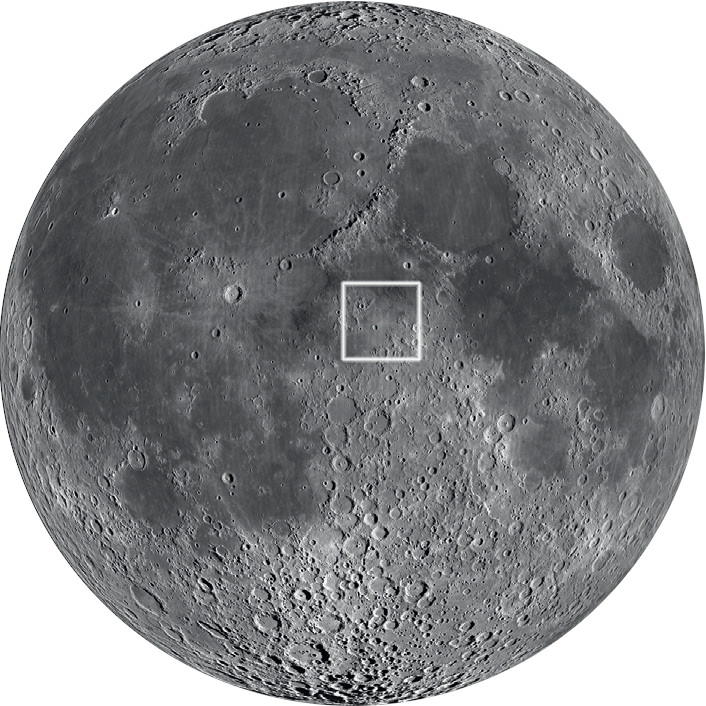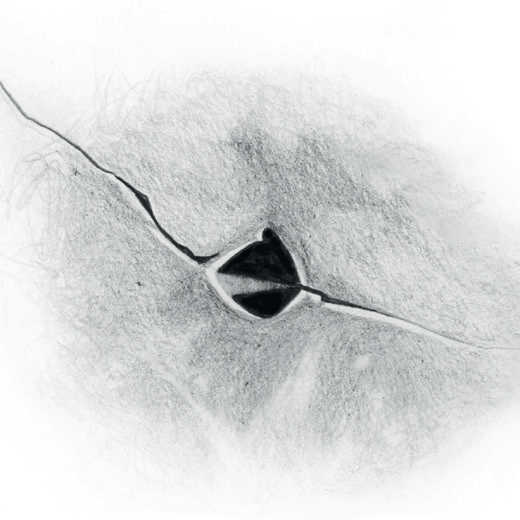Two rilles in one go
Seven days after New Moon, you can study the fascinating Rima Hyginus and Rimae Triesnecker rille systems.
 When the Sun is low, Rima Hyginus and Rimae Triesnecker stand out well from their surroundings. NASA
When the Sun is low, Rima Hyginus and Rimae Triesnecker stand out well from their surroundings. NASALocated between Mare Vaporum (Sea of Vapours) and Sinus Medii (Middle Bay) on the Moon, you will find two fascinating rille systems: Rima Hyginus and Rimae Triesnecker. Here you can observe rilles in different forms and study them over a period of two or three lunar days.
Small but beautiful
 The two rilles are located almost exactly in the middle of the Moon. NASA
The two rilles are located almost exactly in the middle of the Moon. NASAThe 219 km long Rima Hyginus can be seen as a fine curved line, even in a small telescope. Located in its centre is the 9 km wide namesake crater Hyginus. At high magnification, it can be seen that the western section of the rille consists of small overlapping craters. In fact, you are seeing the location of the collapse of a former lava cave.
On closer inspection, Hyginus itself turns out to be a crater of volcanic origin. Evidence of this is the lack of crater walls and its steep slopes. Dark ash deposits around Hyginus caused by volcanic eruptions support this thesis.
Closely intertwined
Rimae Triesnecker appear as a multitude of narrow and flat rilles, which are partly interwoven in a net-like structure. Due to their delicate appearance, Rimae Triesnecker are more difficult to observe than Rima Hyginus. However, in twilight, the rilles appear as fine lines of shadow against the substrate background. The best way to orient yourself is to start at the 26 km wide namesake crater Triesnecker. The widest and easiest-to-see rille section is located just east of it. The entire system runs in the south to the 49 km wide crater Rhaeticus and in the north to the vicinity of Rima Hyginus. Rimae Triesnecker probably also comprise former lava channels, which could be related to the formation of Sinus Medii 3.5 billion years ago.
Light ray in Hyginus
 When the rising Sun is in the right position, it creates a narrow strip of light in crater Hyginus. L. Spix
When the rising Sun is in the right position, it creates a narrow strip of light in crater Hyginus. L. SpixAround 7 days after New Moon, a wedge of light appears on Hyginus’ shadowy crater floor, which gains in size with each passing day. Here, the rising Sun shines through Rima Hyginus, illuminating just a narrow strip. You’ll need a high enough magnification, preferably 150 times or more, due to the small size of the beam of light.
Best visibility 7 or 20 days after New Moon
Author: Lambert Spix / Licence: Oculum-Verlag GmbH
